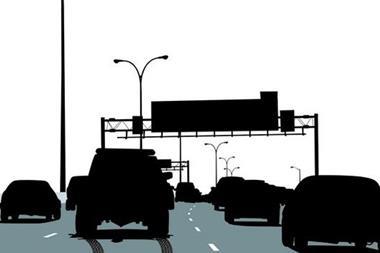Why does Mike Brockman think he can make telematics profitable again?

Digital disruption has almost become a cliché. These days, its rare to see a new product marketed without the word ‘disruption’ as standard.
Telematics – the fusion of telecommunications and informatics – has been around since the 1960s, derived, as much new tech often is, from the defence sector.
But it was arguably Insurethebox that spearheaded genuine disruption in the motor insurance sector. Insurethebox founder and entrepreneur Mike Brockman is now planning on shaking up the telematics market once more with his new ‘super-duper dashcam’ product Theo, launched as Insurance Times went to press.
“Insurethebox was me thinking about how telematics could work, and I decided that the only way it would work is to build an insurance company that lived and breathed technology,” Brockman tells Insurance Times.
“You can build all the tech into the operational processes. All the IT, all the underwriting, all the service side, claims handling. On the shop floor, they could take advantage of the technology and that’s how you extracted asset value from a technology which customers wouldn’t pay for.”
But the problem he highlighted was that the traditional telematics ‘black box’ has to be given away for free as part of the insurance proposition, with a cut in premium to incentivise the customer to take it.
The difficulty making telematics profitable had led to the technology primarily catering to the young driver market – “the only segment where you can make money”, Brockman concedes.
This led him to conclude four years ago that the market did not offer much hope for future growth. “We’d sold 800,000 policies in that time. I knew we’d already peaked. The question was, how do you make telematics really work for everyone?”
This and other factors are making it increasingly difficult to be successful in telematics.
Brockman says he thought good and hard about how to take the product to the next level and having come across a product in the US market which combined ADAS (advanced driver-assistance systems) with a camera and a mobile phone he decided “this is it”. But he hated how it had been put together, so he worked to develop a product that he thought customers would buy.
The result was Theo, which uses Amazon Lex voice and text technology and looks like a consumer product, opposed to just being a nondescript telematics black box, so Brockman’s marketing pitch goes.
Essentially, when you have an accident, Theo detects it and will say ‘we think you’ve had an accident’, promoting you to answer ‘yes’ or ‘no’. It can then ask if anyone has been injured and upload video from 12 seconds before and after the accident to the company, which, Brockman says, can determine what happened in the accident to an accuracy of 95%.
Theo will cost drivers £220, plus a monthly £4.99 subscription fee. To sweeten the deal, customers will receive rewards, including money off pizzas, experiences, and suchlike. The more of their data they agree to share, the more they get back.
As to whether or not customers will agree to surrender their data, Brockman insists: “We are there to make the data work for the consumer if they chose. All the data from here is encrypted from the device, and on our service side as well.”
Why aren’t insurers doing this?
Brockman has been in the insurance business for 38 years. Having been “on the inside” of the industry, he now sees himself as a “consumer champion”. Looking from the outside, he says the industry is “all talk and no do, especially in insurtech investment. The reality is that insurers won’t take risk, which is odd considering that their sole purpose is insuring risk.
“They can’t see beyond the end of their noses. If they’ve had a bad experience, a lot of insurers will never go there again rather than say ‘that was a bad experience, what would make it or turn it into a good one if something better comes along?’
“What I’m doing is essentially saying to an insurer, you don’t need to do telematics yourself, because I’m going to handle these customers with the technology. I just want a good price with an original product.
“But if you mention telematics to an insurer, they say ‘I’ll go talk to our head of telematics’, but essentially I’m doing him out of a job. So he’s not going to like what I’m doing at all,” Brockman says.
Claims management
Currently ThingCo (Brockman’s company behind Theo) has a claims management accreditation from the Ministry of Justice. Brockman has applied for an FCA intermediary licence, but the process could take up to nine months. So the insurance distribution side is being dealt with by Sam White’s Pukka (see page 62-63), Freedom brokers and first notice of loss (FNOL) firm Action365.
According to the ThingCo chief executive, one of the problems facing telematics is the focus on the younger driver. “The early rewards of having a [telematics] box have gone out of the window because it’s become the norm”, Brockman says.
Brockman concedes that telematics features will inevitably be built into cars, but adds that vehicle manufacturers do not yet know how to make the data work for consumers. Until that happens, the entrepreneur is banking on Theo bridging that gap.
“There’s millions of cars on the road and it’s going to take a long time for them to be replaced with smart technology that’s built into cars,” Brockman says, adding that any technology in a car today is typically already four years old.
Premiums in motor market are still too low, he says, and telematics is not seen as the solution. “If anything, it’s made it worse,” Brockman claims. As technology has brought premiums down, the problem is extracting reduction in risk, he adds.
Brockman illustrates the challenge of making money in the present market with a typical black box offered by an insurer. The service plus fitting will cost £85. A typical young driver premium is about £1,200. The insurer will have to give at least a 15% discount by offering telematics to make it worthwhile for the customer. Essentially with a conventional telematics model you are down before you’ve started.
“My experience of the younger driver segment is that you can decrease claims frequency by about 20%. If you know what you’re doing on claims handling and FNOL, fraud, and so on, you can reduce the average cost by 10%. If you do the maths, you just about come out a winner, against not doing it at all.
“And on renewal you’ll also win because you won’t have to fund that £85. But it’s marginal. That’s why a lot of people who don’t know how to do this in conventional telematics fail. That’s what’s happened in the marketplace today, essentially.”
Aiming high
This is where Brockman hopes Theo can come into play. Although his device is more expensive than an average dashcam, he aims to get the price of Theo down as soon as possible.
He is targeting 35,000 sales in the first year, and more than 600,000 by year five, including the possibility of selling overseas, via Amazon.
Brockman explains how his model could succeed where others have failed. “With Theo, the device will have already been sold to the customer, so there’s no cost to the insurer. Because I’m a distribution channel, not through aggregators, customers will probably accept a 10% reduction in premium, not 15%. Just give me a normal broker’s commission of 10% per year.”
“If my theory works, we should be able to build up quite a big portfolio because the product appeals to a wide range of the market, whereas the insurance (telematics) model appeals to young drivers only.”
Hosted by comedian and actor Tom Allen, 34 Gold, 23 Silver and 22 Bronze awards were handed out across an amazing 34 categories recognising brilliance and innovation right across the breadth of UK general insurance.




















































No comments yet